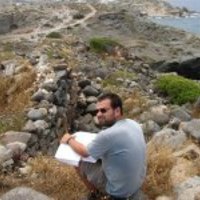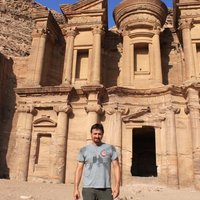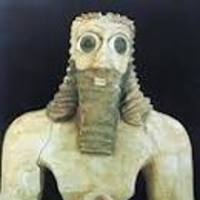
Laure NUNINGER
Laure Nuninger's principal research relates to the analysis of the settlement in the long duration using statistical and geographical methods (spatial analysis and modeling) applied to archaeology. She studied in particular the evolution of the networks of habitat and their agrarian system to model the territorial dynamic during iron age and antiquity. Her work contributed to enrich the research protocols of the Archaeomedes program (dir. S. van der Leeuw) and continues beyond the Rhone valley by the coordination of the ArchaeDyn project (ACI-ANR dir. F. Favory) and the TransMonDyn project (ANR dir. L. Sanders). She is co-responsable, with K. Ostir, for the European Associated Laboratory ModeLTER involving French and Slovenian researchers. She also takes part in the steering committees of two french networks: Spatial Information and Archaeology (ISA) and Modeling of Spatial Dynamic (MoDyS, interdisciplinary network supported by CNRS dir. X. Rodier).
less
Related Authors
Michael Boyd
University of Cambridge
Maurizio Forte
Duke University
David Seamon
Kansas State University
João Fonte
University of Exeter
Stefano R L Campana
University of Siena / Università di Siena
Enrico Cirelli
Università di Bologna
Heather D Baker
University of Toronto
Henry Colburn
Hofstra University
Marie Louise Stig Sørensen
University of Cambridge
Michael Dietler
University of Chicago
InterestsView All (15)










Uploads
Papers by Laure NUNINGER
1) An environment that was not settled before, offering the best soils and an advantageous topographic position?
2) A site that was occupied before, offering e.g. building materials that were left behind?
3) Or an environment that had already been adapted, e.g. by clearances, parcellation or soil improvements?
In order to study this effect, we developed a method to calculate a ‘heritage map’ based on the concept of ‘memory of landscape’. Such a map can be seen as one variable among many others influencing site location preference, and can be used as input for predictive models. The computed values equate to an index of long-term land use intensity. In this paper, we will first discuss the method used for creating the heritage map, in particular the calculation of an optimal radius for the settlement surroundings that needs to be taken into account, for which kernel density estimates are used.
We will then present the results of using this heritage map for the analysis of location preferences for the Roman period in two different study areas in the southeast of France (Vaunage and Argens). From earlier analyses (Nuninger et al. 2012; Verhagen et al. 2013) it was clear that the influence of the natural environment on settlement location choice in the Roman period is limited. In contrast, the ‘memory of landscape’ seems to have a stronger influence on the placement of new settlements. We will discuss the implications of this for predictive modelling of settlement patterns.
For our current research, we have used this method not just for the characterisation of the settlements’ context, but also for predictive modelling purposes. In most published predictive modelling studies, comparison of settlement and environmental characteristics is done for the sites’ locations only, and the immediate surroundings of the settlements are not usually taken into account. The environmental contexts of settlements can however be defined with relative ease with the method described. It is then a small step to extrapolate the classification results to all locations in the landscape, and see how well these correspond to a context that is known to contain settlements. However, for predictive modelling we also need information on the occurrence and distribution of contexts that do not have settlements. For this reason, we have extended the analysis to characterize the context of each position (pixel) in the landscape. Furthermore, we have tried to add new, ‘socio-cultural’ descriptors to the ones already used, like visibility, accessibility, the hierarchical position of settlements and the effect of previous occupation (‘the memory of landscape’). In this way, it will become possible to move away from a purely environmentally based characterization and prediction of settlement patterns.
For this study, we have departed from the methodology developed in the 1990s during the Archaeomedes Project (Favory et al. 1999, van der Leeuw 1998; van der Leeuw et al. 2003; Nuninger et al. 2007). By analyzing the surroundings of Roman settlements in the French Rhône Valley, it proved possible to make cross-regional comparisons of settlement location factors, in particular slope, aspect, solar radiation and soil type. However, at the time this method was not used for PM purposes, and did not include an analysis of non-environmental factors. For the current research, we modified this approach, and analyzed not just the surroundings of the known Roman settlements, but of every pixel in three different study regions, Vaunage (Languedoc, France), Argens-Maures (Provence, France) and Zuid-Limburg (Netherlands). Furthermore, the set of variables analyzed was expanded with a number of ‘socio-cultural’ factors, in particular accessibility, visibility, and the effect of previous occupation (the ‘memory of landscape’). From this, we created predictive models using a combination of principal component analysis and cluster analysis. By making a side-by-side comparison of predictive models based on environmental variables, and models based on a combination of environmental and socio-cultural ones, we could show that, at least for this particular archaeological context, the inclusion of socio-cultural variables will increase the predictive power of the models. More importantly however, we have developed a protocol for PM using both environmental and socio-cultural factors that can easily be implemented for different regions and time periods.
REFERENCES
Favory, F., Girardot, J.-J., Nuninger, L., Tourneux F.-P. 1999. ARCHAEOMEDES II : une étude de la dynamique de l’habitat rural en France méridionale, dans la longue durée (800 av. J.-C.-1600 ap. J.-C.). AGER 9, 15-35.
Nuninger, L., Tourneux, F.-P., Favory, F. - From Archaeomedes to Archaedyn. In: Poslushny, A., Lambers, K., Herzog, I. eds. – Layers of perception, proceedings of the 35th Computer Applications and Quantitative Methods in Achaeology Conference, Berlin, Germany, April 2-6, 2007, Bonn (Germany): Habelt, 2008 (Kolloquien zur Vor- und Frühgeschichte, vol. 10) : p. 278 and CD.
Van der Leeuw, S.E. (Ed.) (1998). The Archaeomedes Project - Understanding the natural and anthropogenic causes of land degradation and desertification in the Mediterranean. Luxemburg: Office for Official Publications of the European Union.
Van der Leeuw, S., Favory, F. & Fiches, J.-L. (Eds.) (2003). Archéologie et systèmes socio-environnementaux: études multiscalaires sur la vallée du Rhône dans le programme ARCHAEOMEDES. Valbonne: Presses du CNRS (Monographies du CRA).
However, these methods do not provide much information on the possible foci of movement in the landscape. We argue that to this purpose some additional steps are needed. We depart from the creation of multiple least cost paths from and to random locations (Verhagen in press). This will result in structures of least cost paths that resemble networks with different weights attached to the edges, but that do not have any real ‘nodes’, similar to the kind of structures that are analysed in space syntax or other forms of spatial network analysis. We can then assume that edges with a high weight will have been most attractive to travel, and thus may have been more attractive to settlement as well. However, the presence of settlement itself must undoubtedly have influenced travel intensity, and a combination of landscape based accessibility and network analysis techniques would seem necessary to get a grip of their combined influence. An exploratory network analysis was therefore performed to examine a range of structural features of the junctions in the landscape that were identified by the least cost paths. The relative prominence of these nodes as indicated through different network measures was then compared with their relative position to features in the landscape and with their relative position on the least cost paths.
Unfortunately, satisfying software solutions to combine the raster-GIS cost surface techniques with node-and-edge-based network analysis software are missing at the moment. In this paper we want to present an exploration into possible solutions, and show some examples of what might be done by combining both analysis techniques, focusing on settlement location analysis and predictive modelling.
References
LLOBERA, M., 2000. Understanding movement: a pilot model towards the sociology of movement In Lock, G. (ed.) Beyond the Map. Archaeology and Spatial Technologies, pp: 65-84. IOS Press/Ohmsha, Amsterdam.
VERHAGEN, P., in press. On the road to nowhere? Least cost paths, accessibility and the predictive modelling perspective. Proceedings of CAA2010, Granada.
des données de prospection archéologique et les difficultés rencontrées pour les analyser et les interpréter. Utiliser ce type de données pour mieux comprendre les dynamiques socio-
environnementales qui ont contribué à modeler nos territoires, est toutefois un enjeu qui guide, depuis plus de 20 ans, un collectif de chercheurs dans une entreprise de longue
haleine visant à extraire le maximum d’informations de ces données modestes et très hétérogènes.
Ce travail, mené dans le cadre du GDR 954 « Archéologie de l’espace rural méditerranéen dans l’Antiquité et le haut Moyen Âge » (CRA CNRS, Valbonne,1990-1993), de deux programmes européens Archaeomedes I (1992-1994) & II (1996-1998), d’une
ACI et d’une ANR Archaedyn I (2005-2007) & II (2009-2011) se situe dans une approche quantitative et résolument spatiale. De fait, il implique une réflexion approfondie sur les interactions entre lieux d’habitat, ou plus généralement entre lieux où l’on enregistre une activité passée, qui dépasse la relation binaire entre un site archéologique et l’espace géographique
qui le contient (cf. occupation du sol). Dans ces conditions, le collectif s’est attaché à caractériser les établissements (c’est-à-dire les lieux où des individus se sont installés pour développer une activité), non pas dans leur singularité (typologie descriptive), mais dans leur positionnement relatif les uns par rapport aux autres (typologie hiérarchique).
Ce cadre théorique est à l’origine du concept de « réseau d’habitat » qui est ici considéré comme l’objet d’étude permettant d’appréhender les dynamiques territoriales dans la longue durée. C’est donc la perception des relations qu’entretiennent avec leur environnement un groupe d’habitats interconnectés, et non pas des habitats pris individuellement,
qui constitue le fondement de nos travaux. Si les problématiques abordées, l’organisation socio-économique et politique d’une part et les interactions homme-milieux d’autre part, L’Archéologie en mouvement. Hommes, objets, espaces et temporalités – 23-25 juin 2010 ne sont pas nouvelles, ce modèle est innovant car il permet d’envisager l’intégration de ces
deux perspectives pour aborder les questions de durabilité, de résilience et d’innovation des anthroposystèmes.
Après avoir présenté les concepts et explicité les hypothèses générales sur lesquelles se fondent les travaux des collectifs successifs, nous nous focaliserons sur la méthode utilisée
pour caractériser les établissements et leur relations. Cette présentation sera l’occasion de synthétiser les résultats des expériences menées depuis plus de 20 ans sur de multiples
bases de données, dans plusieurs micro-régions en France et à l’étranger, pour différentes périodes et à plusieurs échelles de temps et d’espace. On s’intéressera en particulier à la
robustesse des critères utilisés pour la caractérisation de l’habitat et à la façon dont ils structurent l’information pour montrer l’apport des approches comparatives dans l’élaboration
de nouvelles connaissances sur les systèmes de peuplement passés.